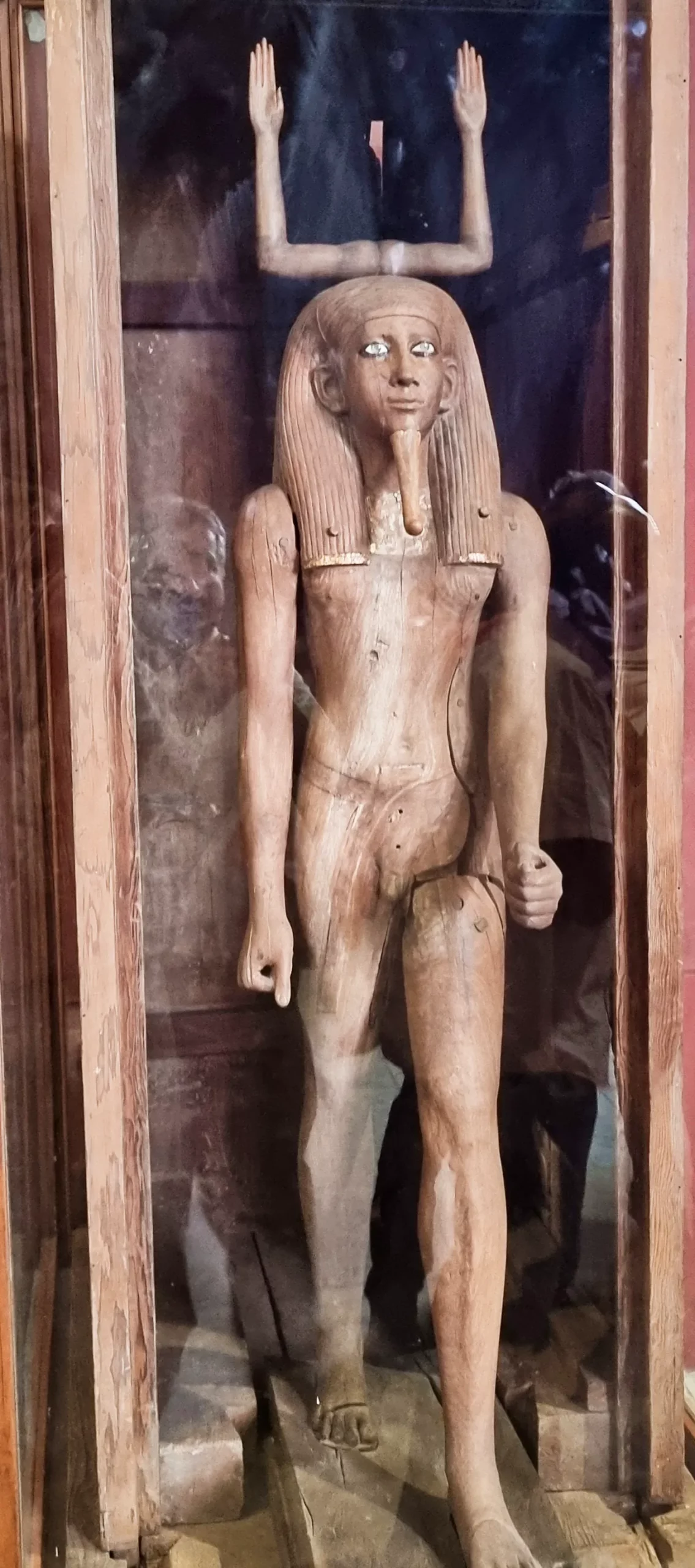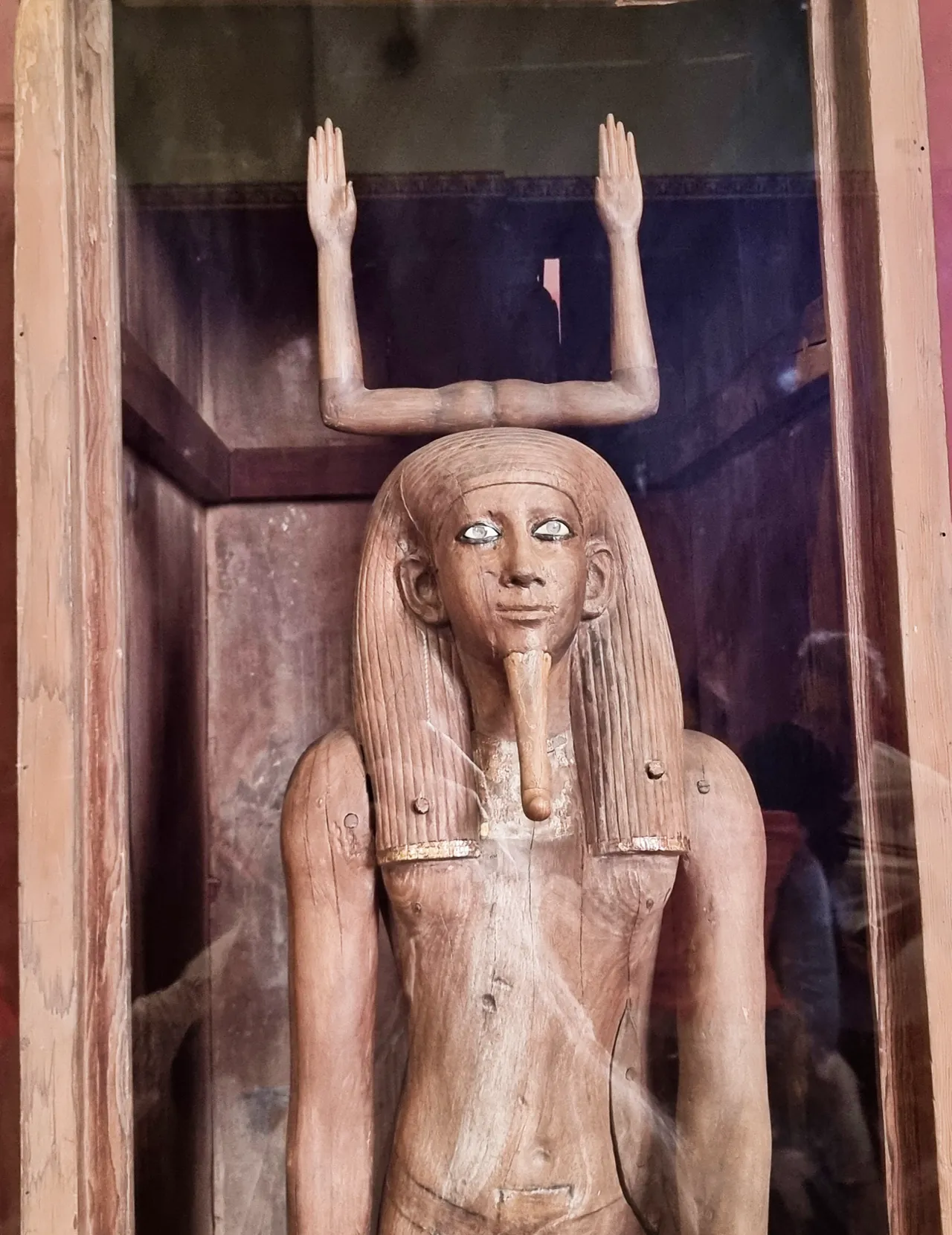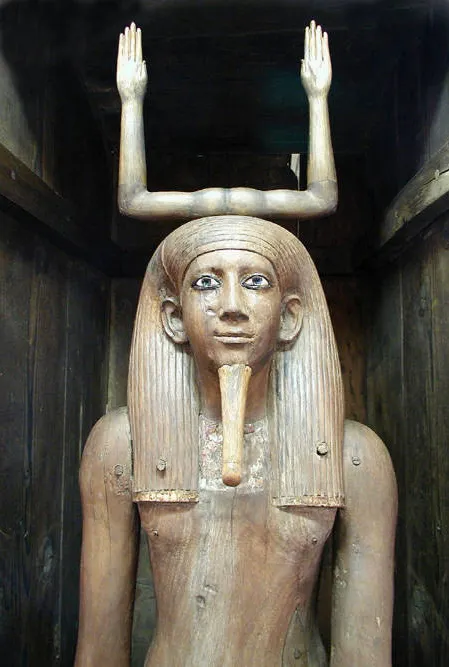The Ka Statue of King Hor: A Masterpiece of Egyptian Art
The Ka statue of King Hor, dating back to around 1750 BC during Egypt’s Thirteenth Dynasty, stands as a remarkable piece of ancient Egyptian art. Now housed in the Egyptian Museum in Cairo, this statue not only showcases the craftsmanship of the time but also holds deep religious and cultural significance. Discovered in 1894 by archaeologist Jacques de Morgan near the pyramid of Amenemhat III at Dahshur, the statue remains a key artifact from an often overlooked period in Egypt’s history.
Get your dose of History via Email
Description of the Statue
The statue itself stands at 135 cm tall, but when including the base and the Ka-sign on its head, it reaches a height of 170 cm. Made of wood, the figure was originally covered in a thin layer of stucco, which has since worn away. The statue depicts King Hor in a nearly nude state, though traces of a belt on the wood suggest he may have once worn a kilt. Around his neck, he wears a broad collar, a common decorative element in Egyptian art.
The figure also originally held a staff and a scepter, symbolic of royal power. The most striking feature is the Ka-sign, a representation of the king’s life force, which sits atop his head. This sign, found next to the statue during excavation, was later reattached to its proper position.
The statue was discovered lying inside a wooden shrine, or naos, within the tomb. Both the statue and the shrine were found on their backs, likely due to the tomb’s collapse or looting over the centuries. The shrine had once been adorned with gold foil and hieroglyphic inscriptions detailing the king’s name and titles, but these details have since been lost.

The Role of the Ka in Egyptian Belief
In ancient Egyptian religion, the Ka represented one of the most important aspects of the soul. Egyptians believed a person’s spirit was composed of several parts, and the Ka was essentially the life force that would continue to exist after death. Statues like this one of King Hor were created to house the Ka, ensuring the king’s continued existence in the afterlife.
The fact that the statue of King Hor was found surrounded by numerous offerings suggests it played an important role in funerary practices. Dorothea Arnold, a noted Egyptologist, has speculated that the statue may have originally been intended for placement in the king’s cult temple. However, since King Hor’s reign was brief, it’s likely that the temple was never completed, and the statue was instead placed directly in the tomb.
Artistic Significance
The Ka statue of King Hor has garnered significant attention from art historians. It exemplifies the blend of realism and idealization characteristic of Egyptian royal sculpture. W. Stevenson Smith, a prominent scholar of Egyptian art, describes the statue as “idealized naturalism.” While many statues from the late Twelfth Dynasty depict rulers with aged, careworn faces, the depiction of Hor is youthful and serene, conveying a sense of eternal strength and vitality.
The statue’s craftsmanship also demonstrates the skill of Egyptian artisans during the Thirteenth Dynasty. Despite the political instability of this period, art from this time reflects a continuation of the high standards set by earlier dynasties.

Conclusion
The Ka statue of King Hor is not just a beautiful work of art but also a deeply symbolic representation of ancient Egyptian beliefs about life, death, and the afterlife. Its discovery near the pyramid of Amenemhat III has given scholars invaluable insight into the funerary practices of the period. As one of the few surviving royal statues from the Thirteenth Dynasty, it continues to be a vital piece of Egypt’s cultural and artistic legacy.
Sources:

